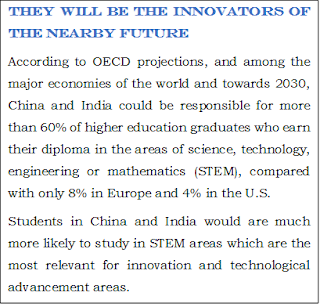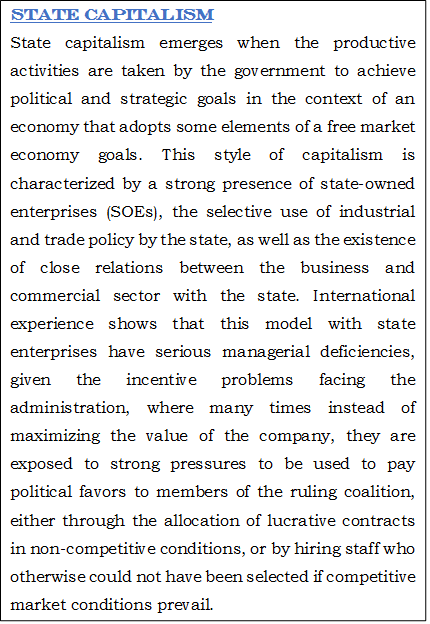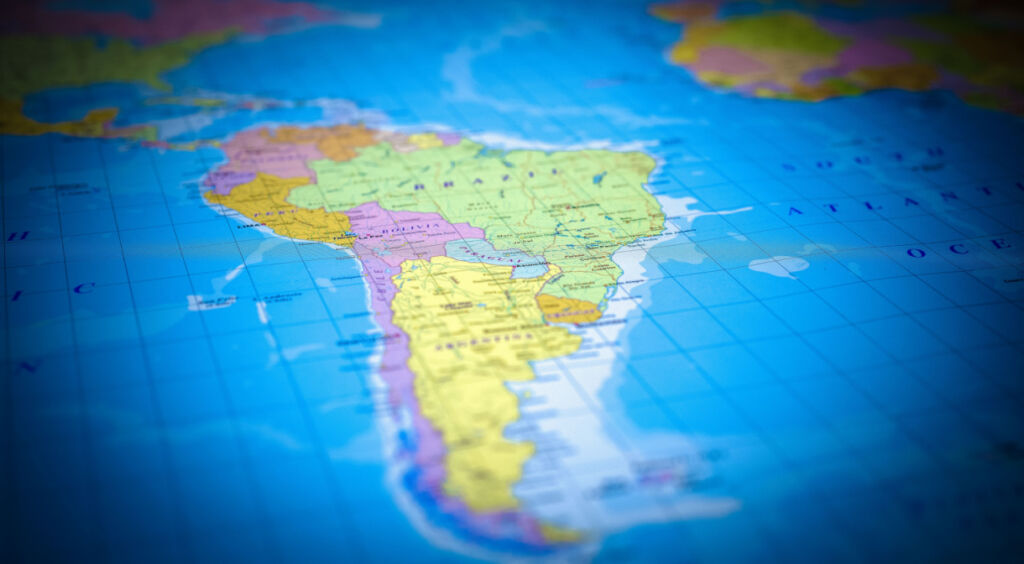China has MORE room FOR growTH!*
Since the twentieth century China has navigated within different
economic models always with a strong state participation. But in the last three
decades, its authorities have driven toward and increasing integration and
openness with the global economy, along with a huge boost to export manufactured
goods from companies where there is a strong state control.
The giant supplier
Some clouds exist regarding the consequences of the economic slowdown in
the Asian giant, which after growing at an average rate of just over 10%
between 1991 and 2014, in 2015 for the first time in 25 years its GDP growth
rate was less than 7%, 6.9% as estimated by the International Monetary Fund (IMF)
(see figure 1). IMF projects that in 2016 and 2017 China will growth 6.5% and
6.2%, respectively; what means that each year it will add to the world economy
and economy that`s 90% of the size of the Turkish economy, or 133% the size of
the Argentinean economy.
China today is one of the driving forces behind the development of the
global economy. Since 1990 the size of its economy has grown more than tenfold,
from being the 12th world's largest economy, behind Brazil and Mexico, to
become the world's second largest economy, with about 13.4% of the value of the
global economy in current dollars, below the US reaching 22.5%. So when China
has been growing at rates of 10%, it added 1.3% of growth to the global
economy, but with China growing at rates under 7%, its contribution to the
growth of the global economy is reduced to half. The global economy has grown
at rates of 3.3% in 2013, 3.4% in 2014 and 3.1% in 2015 according to statistics
of the International Monetary Fund.
The effects of the downturn and slower growth in China have been felt in
different areas, as lower growth in demand for raw materials and energy, and the
tumble of their prices, which have severely adversely affected revenues and government
budgets for those raw materials exporter countries. We have seen the collapse
of copper prices from $ 4 per pound in 2011, to just over $ 2 per pound in
2016; and the collapse of oil prices from over $ 100 dollars per barrel in 2011
to levels of US $ 30 per barrel in February 2016 (Figure 2).
State
capitalism
After three decades of the establishment of the Communist China of Mao
Tse-tung (1949), where the state took control of most of the means of
production, from the early 80s China begin to take some steps towards a more
decentralized economic system, opening more space to private capital and
individual initiative, but retaining a strong state control and boost in the
country's industrialization, using as a vehicle state-owned enterprises (SOE`s).
China
reforms have driven to a large-scale industrialization, in a largely
centralized economy, which seeks greater integration with the global economy with
an emphasis on exporting manufactured goods. These reforms have turned China
into a giant supplier of manufactured goods globally, which holds more than 13%
of worldwide exports, after having only 1.9% in 1990 and 4.3% in 2001. China
can be considered as the economic region with the largest volume of exports in
the world, followed by the European Economic Community and the United States.
Their model is based on what is known as State
Capitalism, where most of the business and economic activity takes place in
companies where there is strong state ownership and control. These Chinese companies
have become global giants, in diverse sectors, such as manufacturing, natural
resources, financial services and utilities. These echoed in that more than 80%
of Chinese stock market consists of SOEs, and, for example, also on the fact that
in 2015 five of the ten largest companies in the world, according to Forbes
ranking, were controlled by the Government of China, including four banks and
Petro China.
The strong industrialization policy led by Chinese government, implied
that in 2014 the rate of capital investment is 47% of GDP, figure that is
almost twice the world average and more than twice the rate of Chile. The
strong investment aimed at productive infrastructure and housing has installed
a glut of productive capacity and housing that has generated doubts about what`s
the true private and social returns on these investments, which, coupled with a
strongly intervened financial and securities market, makes it difficult to
determine the free or market equilibrium prices, both in the stock and the
asset markets. The price system in many sectors of the Chinese economy operates
with restrictions, so that adjustments in prices and quantities between supply
and demand do not always occur as should happen when supply and demand are freely
moved.
It has been the coexistence of public and private decisions in the
management of companies which has generated concern regarding the businesses and
profitability criteria that exist behind the process of decision making, and
development plans of SOEs, and the impact all these have on imbalances at the
macro and microeconomic level.
The rapid growth of China, subsidized by a government policy that has
encouraged disproportionate investment at the expenses of lower wages, is what
has endorsed a strong boost with cheap exports of manufactured goods. The
return on assets of state enterprises, which dominate heavy industry, are a
third of what is achieved by private companies, and half of what is achieved by
foreign companies in China.[1] This
situation has meant an increasing level of concern regarding the SOEs, which
are seen as "zombie companies". The problem of SOEs with excess of
debt and capacity in the Asian giant, with a strong state intervention in their
decision making process, are seen as closely intertwined issues within the
economic reality of China.
What
the Rankings say ABOUT CHINA?
If we consider the place of China in various rankings, and what they
speak about the country`s development level, and business environment attractiveness,
we see that there is a room for the country to growth more!
China ranks 144 in the Index of Economic Freedom prepared by the
Heritage Foundation for a total of 178 economies, which evaluates the right of
each person to control their destiny, their work and property; the country is
in the number 84 position in the Doing Business ranking compiled by the World
Bank for a total of
189 economies in the world, which assesses the ease of doing business looking
at the regulatory framework and its implementation; it ranks 90 in the Human
Development Index (HDI) prepared by the United Nations for a total of 188
economies, which assesses the average achievements in a country in three main
dimensions of human development, say life expectancy and healthy, level of
education and a decent standard of living as measured by per capita income; and
finally ranks at number 83 in the Corruption Perceptions Index prepared by International Transparency which evaluates the
perception regarding the level of corruption in the public sector.
Except for the Index of Economic Freedom, where China is far below the average, in the other measures is position in the middle of the table, which recognizes significant achievements, but also acknowledges the huge space that the country has to growth even more by implementing best practices in areas such as institutions, governance and the rule of law, the fight against corruption, more economic freedom, and in the promotion of more welfare for his population.
Except for the Index of Economic Freedom, where China is far below the average, in the other measures is position in the middle of the table, which recognizes significant achievements, but also acknowledges the huge space that the country has to growth even more by implementing best practices in areas such as institutions, governance and the rule of law, the fight against corruption, more economic freedom, and in the promotion of more welfare for his population.
Advance reforms: state enterprises and
the State
China needs to make progress in promoting reforms where is promoted a
proper process of decision making in their companies according to market rules,
so that supply and demand find their balance without distortion, and thus
prices reflect the true scarcity goods and services. The country should improve
markets efficiency by allowing them to operate with increasing degrees of
freedom, and that decisions on savings, consumption and investment have a larger
component of decision taken on the market and less from the state, guiding its
population to have a greater say in consumption and savings decisions. And,
reducing the state industrialization bias in the promotion of manufacturing exports,
as the main engine of economic growth, at the expense of the population interest
that aspires to a more focused economy on what their needs and desires are for
higher levels of consumption. All this would allow the production of good and
services to expand into areas where the needs and interests of its citizens are,
such as health, education and entertainment, with a smaller amount of attention
on the beliefs of those who plan and decide the economy from the state. The country
needs to deepen reforms that promote inclusion, mostly in rural areas, household
spending, and a fairness environment for private and public sector
entrepreneurship without the subsidies from the state.
Today, China is moving into this direction, and we might expect that the
country will kept growing at rates that in many places are just a dream. China has more room for growth!
* A Spanish version of this column was published by ClaseEjecutiva in the newspaper El Mercurio of Santiago on April 12, 2016. El Mercurio.
[1] According to “The Economist”, February 27 – March 4, 2016.
[1] According to “The Economist”, February 27 – March 4, 2016.









No hay comentarios:
Publicar un comentario